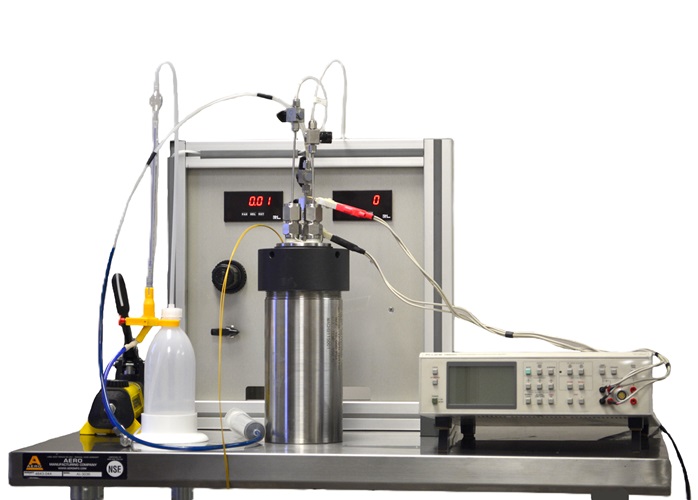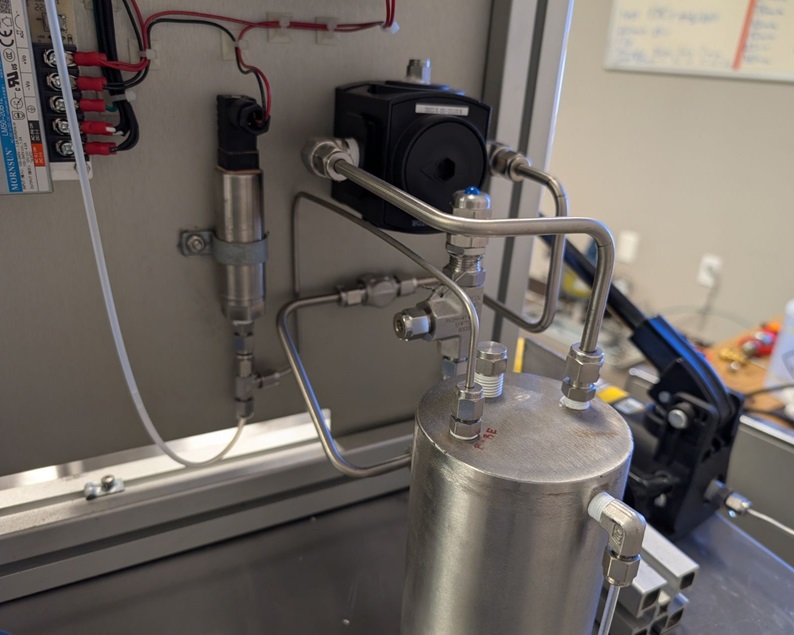Resistivity System
M9115 Electrical Resistivity System

M9115 Electrical Resistivity System

Pore pressure control unit and the liquid container


Electrical resistivity at overburden conditions
Grace Instrument's M9115 Electrical Resistivity System measures rock electrical resistivity at overburden conditions. It measures rock resistivity for both fully and partially brine-saturated core samples.
The M9115 includes a hydrostatic electrical core holder, a hand pump for confining pressure generation, a high precision LCR meter to measure resistivity, a pressurized liquid container with the invading fluid, and a confining and pore pressure control/display panel.
The resistivity measurement is based on the two or four electrode method. The water-wet ceramic plate (located at the core sample end) retains the invading fluid and lets the brine flow out of the core sample. A burette measures the brine expelled from the core to determine core saturation.
| Core Sample Diameter: 1” and 1.5” |
| Core Sample Length: Up to 3” |
| Resistivity Measurement: 2 electrodes (optional 4 electrodes for 1.5” diameter core) |
| Overburden Pressure: 10,000 PSI |
| Pore/air pressure: 150 PSI |
| Temperature: ambient condition |
| Dimensions (without LCR Meter): 22" L x 24" W x 24" H |
| Voltage: 120/220VAC, 50/60Hz |
| Wattage: 50W max |
LCR Meter specifications
| Test Frequency: 10Hz-200kHz (other ranges available upon request) |
| Basic Accuracy: 0.05% under slow/medium test speeds, 0.1% under fast test speed |
| Internal DC Bias: +/-2.5V (0.5%+0.005V) |
| Test Mode: total of 16 combinations |
| Display: 3.5” LCD |
| Power supply: 100V-240V, 50-60Hz |
| Wattage: 15W max |
| Dimensions: 265 W x 107 H x 312 D mm |
| Weight: Approx. 3 kg |
- Enables bench top measurments for formation factor and resistivity index at overburden condition.
- Hydrostatic electrical core holder offers a two points core resistance measurement. (Optional 4 points measurement on 1.5” OD core).
- Advanced resistivity meter with wide range of test frequency and various test modes is used to measure resistance of core sample.
- The data obtained from this device can be utilized to derive formation factor, cementation exponent m, the resistivity index, and Archie saturation exponent n.
